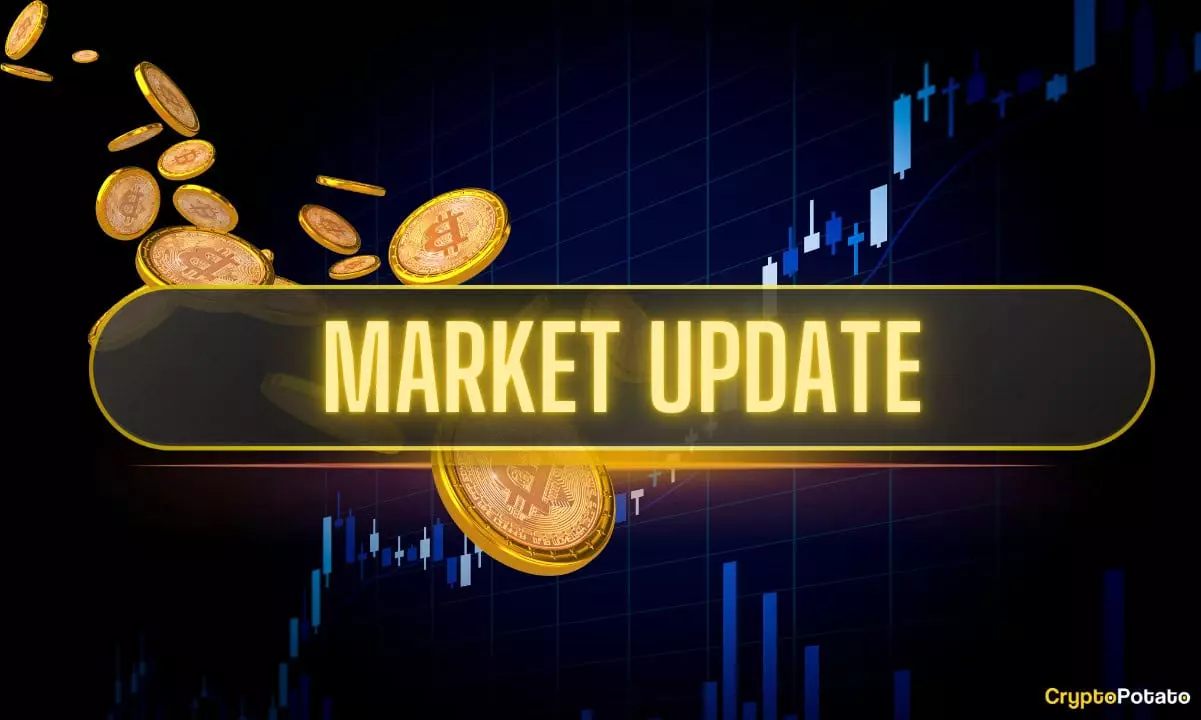In recent times, bitcoin’s performance has elicited a cocktail of optimism and fear among investors. Last week saw the cryptocurrency climb back from alarming depths, bouncing off a five-month low, yet one can’t help but feel that this relief is merely a temporary façade. Bitcoin began the week at around $82,000, bolstered by a brief tariff pause among nations, chiefly excluding China. Yet, the price movements were anything but consistent, oscillating wildly and ultimately failing to yield any meaningful upward momentum. As it stands, the price now fluctuates between $84,000 and $85,000, stagnating in a manner that many seasoned investors find disconcerting.
This behavior indicates a troubling dichotomy; while retail interest in bitcoin remains buoyed, the underlying fundamentals reflect a market still struggling for stability. This is not to say that the mass accumulation by bitcoin whales—those with holdings between 1,000 and 10,000 BTC—doesn’t exude confidence; however, such activities can often foreshadow deeper issues: larger players may be positioning themselves for a future downturn.
Economic Realities: The Tariff Troubles
The macroeconomic landscape lurks ominously over the cryptocurrency market. The potential reopening of trade avenues marked by tariff pauses could have invigorated investor sentiment, yet the underlying geopolitical tensions remain glaringly present. Fed Chair Jerome Powell’s hawkish remarks concerning interest rates interrupted any bullish tendencies this week, as they serve as a reminder that economic cycles are rarely under the control of individual investors or even entire communities. The dangers of the ongoing tariff war are not merely bottom-line statistics; they could significantly affect consumer confidence, which in turn may stifle the overall demand for cryptocurrencies.
The notion of a Bitcoin reserve backed by gold and alternative revenue streams, as proposed by Bo Hines from the President’s Council of Advisers on Digital Assets, is an intriguing hypothesis that could redefine stability for the cryptocurrency. Yet, it strikes me as a sign of desperation—an administration searching for novel financial instruments in an age of economic unpredictability illustrates a systemic reliance on Bitcoin to achieve fiscal stability. This strategy might carry more risk than reward, making the path fraught for not just the digital asset, but the US economy as a whole.
Market Dominance Yet Fragile
Despite cryptocurrencies like Bitcoin Cash and Solana stealing the spotlight lately with impressive gains, Bitcoin’s dominance has surged above 60%, reminiscent of its reign four years ago. But this raises an alarming question: Is Bitcoin’s dominance a genuine reflection of market strength, or is it a mere shadow against a backdrop of a tumultuous economic landscape? The market capitalization now stands at $2.75 trillion, and while this number may appear robust, the actual behavior of cryptocurrencies is reminiscent of an anxious high-wire act, where a small gust of wind could send everything crashing down.
Recent reports indicate a “wait-and-see” phase where investors may adopt a more cautious approach, and this could explain the relatively muted growth evident across trading platforms. Bitcoin’s realized capitalization sits at approximately $872 billion, and the hesitation to trade decisively suggests anxiety may be stifling potential growth. While a consolidation period could allow the market to stabilize, it also breeds uncertainty, leaving investors plagued by doubt.
Whale Wars and Institutional Players
The rising trend of corporate buyers and Bitcoin ETFs stabilizing prices is indicative of a mature market, yet it underscores a larger point—retail investors may be at risk. The actions of whales, institutions, and strategic traders often dictate the market’s direction, leaving everyday investors grappling with the volatility that large entities create. Bitcoin’s price movements no longer merely obey the whims of market trends; they are a product of coordinated strategies influenced by geopolitical tension, economic health, and institutional buying power.
Such phenomena often lead to an unsettling imbalance whereby smaller investors may be left at the mercy of larger entities. If the precipitating factors weren’t enough to worry them, consider the consequences of a sudden market shift: a substantial pullback instigated by corporate decisions could wipe out retail’s latent gains, triggering unforeseen sell-offs.
As the cryptocurrency market grapples with soaring altcoins, economic instability, and burgeoning whale activity, one thing becomes unmistakably clear: the path ahead is fraught with uncertainty. Investors must remain vigilant amidst a swirling sea of economic data, fluctuating prices, and the ever-looming specter of geopolitical conflict.

